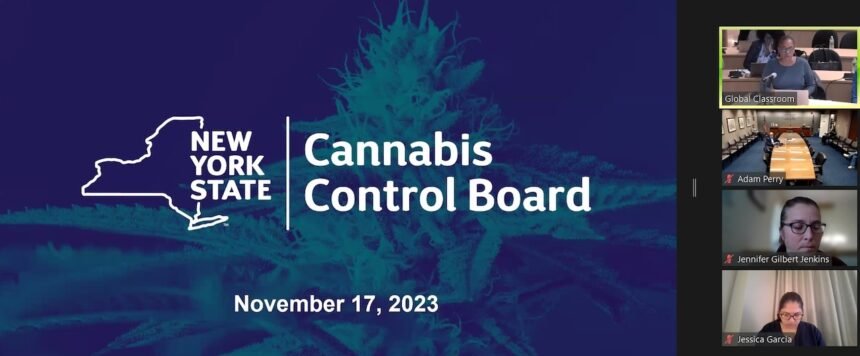Join NY Cannabis Insider for its next industry meetup in Lafayette on June 13, 2024. Tickets available now.
This guest column is from Freeman Klopott, a vice president with Marino, a New York-based public relations firm, who served as the Office of Cannabis Management’s first communications director. The views and opinions expressed in this article are those of the author, and do not necessarily reflect the views or positions of NY Cannabis Insider.
It would be selling the news short to say that New York’s newest state agency, the Office of Cannabis Management (OCM), is under fire. Maybe it’s more accurate to say, it’s under siege. It’s certainly embattled.
Whatever the word, it’s clear we’ve lost the narrative, and in the end, that’s harming the industry for the long-term. New York State needs to get back on track telling the world about how New York cannabis is leading with equity and build that added value back into a narrative to win customers for this start-up industry now and well into the future.
When I took the job as the first communications director for the OCM, I set out to build a messaging platform around the agency’s goal to do what no other state in the nation has done – launch adult-use cannabis sales with a focus on those who were hurt the most by the multi-generational, over policing of cannabis prohibition.
By zeroing in on that narrative, we would set the New York market apart from all others, and with it, the businesses that would thrive within it. I led with the belief that, ultimately, cannabis will be federally legal, allowing for interstate commerce and the enhanced competition that will come with it. To stand out and win customers in the long-run, New York cannabis businesses could hitch their personal stories of overcoming hardship and creating diverse workforces to the state’s big-picture narrative wagon.
Over the course of the 18 months that I held the job, the last stop in nearly eight years of communications leadership roles in state government that included the state Division of the Budget, the state housing agency, and the Dormitory Authority of the State of New York (DASNY), the team I built achieved that goal. The story of New York’s cannabis rollout became an international sensation.
Far too much of that narrative has now dissolved, with the report Governor Kathy Hochul recently released serving as a punctuation point. But if the industry is ultimately to reach its true potential, we need to get the conversation back on track.
There’s no question that there’s been issues with the licensing process, particularly due to the understaffing at the agency that has gone on from its very inception. Folks with applications pending, many of whom have locations secured and are spending on them, deserve to know where they stand in that process, and it’s good news that – if the governor follows through on her report – a fix is being put in place.
But through the midst of it all, we shouldn’t lose sight of the fact that despite the underinvestment in the agency, it has issued hundreds of licenses for dispensaries, processors, and New York farmers, and is more than meeting the goal set out in the state’s cannabis law that 50% of licenses be distributed to “social-equity” applicants. That’s a catch-all term that includes those with cannabis convictions, minority and women-owned businesses, service-disabled veterans, economically distressed farmers, and individuals who come from communities devastated by cannabis-related arrests.
More than 100 dispensaries are now open and continue to open at a steady pace, providing a landing spot for the product being grown and processed by New York-based farmers and companies. The market is not only blossoming, it’s also doing so in the way our state’s law, and those who fought so hard to end prohibition, envisioned it.
As we move forward, the state needs to get back to telling this big picture story about its unique approach to the adult-use cannabis market. Put that back on the front burner, and we can get back to the work of shaping New York’s cannabis story internationally and build a market, and businesses within it, that go beyond withstanding competition – they thrive with it.










